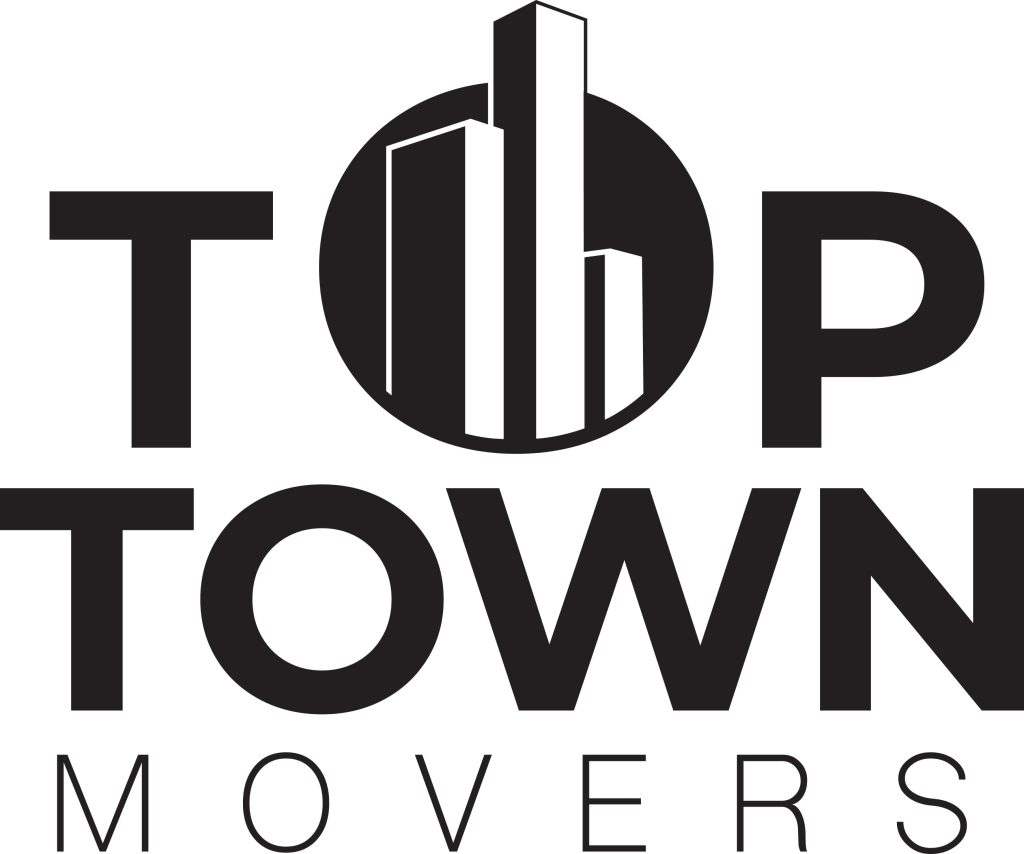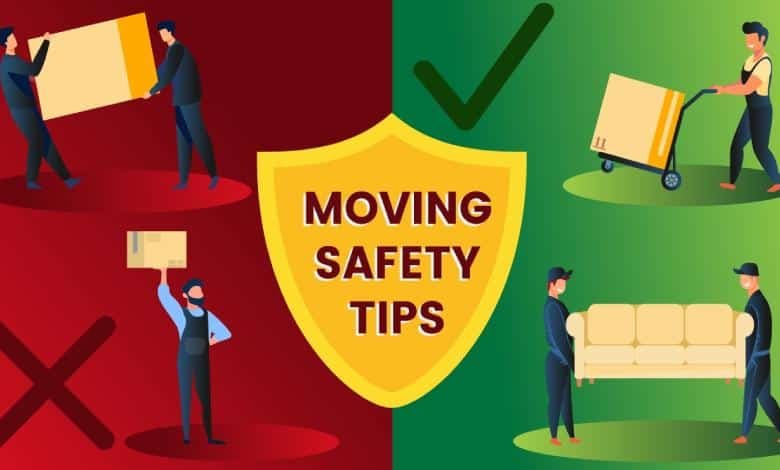Moving day is often characterized by a flurry of activity, excitement, and a little bit of stress. While the focus is naturally on getting belongings from Point A to Point B, safety should always be the priority. For residents and businesses in Ontario, especially in the busy North York area, understanding and implementing proper moving safety tips is crucial to avoiding injuries, protecting your possessions, and ensuring a smooth, damage-free transition.
At Top Town Movers, we are committed to making your relocation as safe as possible, providing both professional expertise and essential advice. This extensive guide compiles the most important moving safety tips, covering everything from physical preparation and packing techniques to navigating the logistics of the big day.
- Learn More >>>Appliance movers near me
Phase I: Physical Preparation and Body Mechanics
The most common moving-related injuries involve the back, knees, and shoulders. Proper planning and technique can drastically reduce this risk.
1. Prioritize Physical Conditioning
Moving is a physical workout. If you plan to do some of the heavy lifting yourself, prepare your body:
- Stretch: Start a routine of light stretching a few weeks before the move, focusing on hamstrings, lower back, and shoulders.
- Warm-up: On moving day, take 5–10 minutes to walk around and stretch lightly before beginning any heavy lifting. A cold muscle is an injured muscle.
- Stay Hydrated: Moving is strenuous, especially during warmer months in Ontario. Drink plenty of water before and throughout the day to prevent dizziness, fatigue, and muscle cramps.
2. Master Safe Lifting Techniques
This is the single most important set of moving safety tips for preventing back injury:
- Lift with Your Legs, Not Your Back: Stand close to the object, keep your back straight and vertical, and bend your knees. Engage your core muscles as you stand up, using the powerful muscles in your legs to generate the lift.
- Keep the Load Close: Hold the box or item close to your body’s center of gravity. Holding it far out places unnecessary strain on your back.
- Avoid Twisting: Never twist your body while carrying a heavy load. If you need to change direction, set the item down, pivot your feet, and then re-lift.
- Test the Load: Before committing to a lift, nudge the item to gauge its actual weight. If it feels too heavy, always ask for help. Never overestimate your strength.
3. Teamwork and Communication
When lifting large or awkward items, coordination is key:
- Communicate Clearly: Before lifting, agree on who will lead and the exact path you will take. Use simple cues like “ready,” “lift,” and “step.”
- Balance the Load: Ensure both people are carrying roughly equal weight. The taller person should typically take the bottom or lower end when going up stairs, as this keeps the item level.
- Hire Professionals: For large, heavy, or sensitive items (pianos, heavy appliances, commercial equipment in North York offices), trust Top Town Movers. Our teams use specialized equipment and techniques that eliminate personal injury risk for you.
- Learn More >>>How Much to Tip Movers: A Complete Guide for 2025

Phase II: The Secure Packing Process
Safety starts long before the boxes are loaded onto the truck. Improperly packed boxes are a significant source of risk.
4. Use Appropriate and Quality Materials
- New or Sturdy Boxes Only: Avoid old, weakened, or damp boxes. They can easily rip and break, causing the contents to spill or leading to an unexpected drop and injury. Top Town Movers offers high-quality, professional-grade boxes designed for moving.
- Right Box Size for the Item: Use small boxes for heavy items (books, records, tools) and large boxes for light, bulky items (linens, pillows, lampshades). This prevents boxes from becoming dangerously heavy.
5. Packing for Safety and Stability
- Do Not Overpack: Boxes should not bulge at the top or weigh more than 50 pounds. Overpacked boxes risk breaking open or causing strain on the person carrying them.
- Even Distribution: Distribute the weight evenly within the box to maintain balance and prevent shifting during lifting or transport.
- Clearly Label Contents and Warnings: Mark all boxes with clear labels like “FRAGILE”, “HEAVY”, or “THIS END UP.” This communicates essential information to anyone handling the box.
6. Secure Hazardous Materials
This is one of the crucial moving safety tips often overlooked:
- Know What Not to Move: Professional movers in Ontario, including Top Town Movers, cannot transport hazardous materials. This includes paint, solvents, gasoline, cleaning chemicals, pressurized containers (aerosol cans), and certain fertilizers.
- Proper Disposal: Dispose of or use up all such items safely before moving day. Check North York’s waste disposal regulations for guidelines on specific chemicals.
- Keep Medications Separate: Ensure all essential and prescription medications are packed in a clearly labeled personal bag that stays with you, not on the moving truck.
- Learn More >>>Moving Timeline Checklist
Phase III: Home and Site Safety on Moving Day
Moving day transforms your home and yard into a high-traffic zone. Controlling the environment is essential for preventing trips and falls.
7. Clear the Path and Secure the Space
- Create Clear Aisles: Ensure all walkways, stairwells, and doorways are completely clear of clutter, toys, tools, and rugs. Remove all potential tripping hazards.
- Secure Children and Pets: The safest place for children and pets on moving day is away from the action—at a friend’s, a sitter’s, or in a secured, closed-off room. They pose a tripping risk and can cause distractions that lead to accidents.
- Protect Floors and Walls: Use moving blankets, carpet protectors, or flattened boxes to cover hard floors and high-traffic areas. This protects your property and provides better traction for the movers.
8. Managing Stairs and Thresholds
Stairs are one of the most dangerous areas during a move.
- Ensure Adequate Lighting: Make sure stairwells and dark areas of the home or basement are brightly lit.
- Use Handrails: Always maintain three points of contact when going up or down stairs without a load. When carrying a load, ensure the path is clear and move slowly, maintaining a clear view over the top of the box.
- Beware of Wet Surfaces: If it is raining or snowing (common in Ontario), be extremely cautious of wet entryways. Lay down towels or mats to wick away moisture and prevent slips.
9. Electrical and Appliance Disconnects
- Proper Shut-Down: Ensure all appliances are professionally and correctly disconnected. Refrigerators must be emptied, defrosted, and cleaned at least 24 hours prior to the move.
- Secure Cords: Tape or tie up all electrical cords and cables to their corresponding appliances or devices. Loose cables are a major tripping hazard.
- Water and Gas: Ensure water and gas lines to laundry machines and dryers are shut off and properly disconnected. Never try to disconnect a gas appliance yourself; hire a licensed professional.
- Learn More >>>Does moving affect credit score?

Phase IV: Logistics and the Moving Crew
Hiring a professional mover like Top Town Movers is arguably the best of all moving safety tips, but even with a crew, coordination is vital.
10. Truck and Parking Safety
For residential and commercial moves across North York, access can be tricky.
- Reserve Space: Secure the best possible parking space for the moving truck. The shorter the distance between the entrance and the truck, the less fatigue and risk of accidents.
- Watch the Ramps: When the movers are using a ramp, keep clear. The ramp is designed for professional use with specialized equipment. Do not attempt to walk up or down the truck ramp yourself, especially not while carrying a box.
- Visibility: Use cones, caution tape, or signs to delineate the active moving area, especially if the truck is parked in a public or high-traffic street in North York.
11. Personal Safety on Moving Day
- Dress the Part: Wear close-toed, sturdy shoes with good tread. Avoid sandals or flip-flops. Wear comfortable, non-restrictive clothing. Avoid loose jewelry that could snag or tear.
- Keep Valuables with You: For your peace of mind and security, personal and valuable items (jewelry, cash, important documents) should be moved by you in your personal vehicle.
- First-Aid Ready: Keep a basic first-aid kit easily accessible for minor cuts, scrapes, or strains.
- Learn More >>>A Complete Move Out Cleaning Checklist
Top Town Movers: Your Partner in Safety and Security
While following these moving safety tips is essential, the ultimate layer of protection comes from partnering with an insured and experienced moving company.
At Top Town Movers, we adhere to the highest industry standards for commercial and residential moves throughout Ontario and the North York area. Our professional teams are trained in:
- Advanced Lifting Techniques: Utilizing dollies, straps, furniture sliders, and specialized equipment to minimize manual handling of heavy objects.
- Load Securement: Expertly loading and securing the truck to prevent shifting and damage during transit.
- Liability and Insurance: Providing comprehensive coverage that protects your belongings and provides liability coverage for our crew members, so you don’t have to worry about onsite accidents.
Moving should be an exciting step forward, not a perilous chore. By integrating these comprehensive moving safety tips into your plan and relying on the expertise of Top Town Movers, you ensure your transition is not only successful but fundamentally safe and worry-free.

































